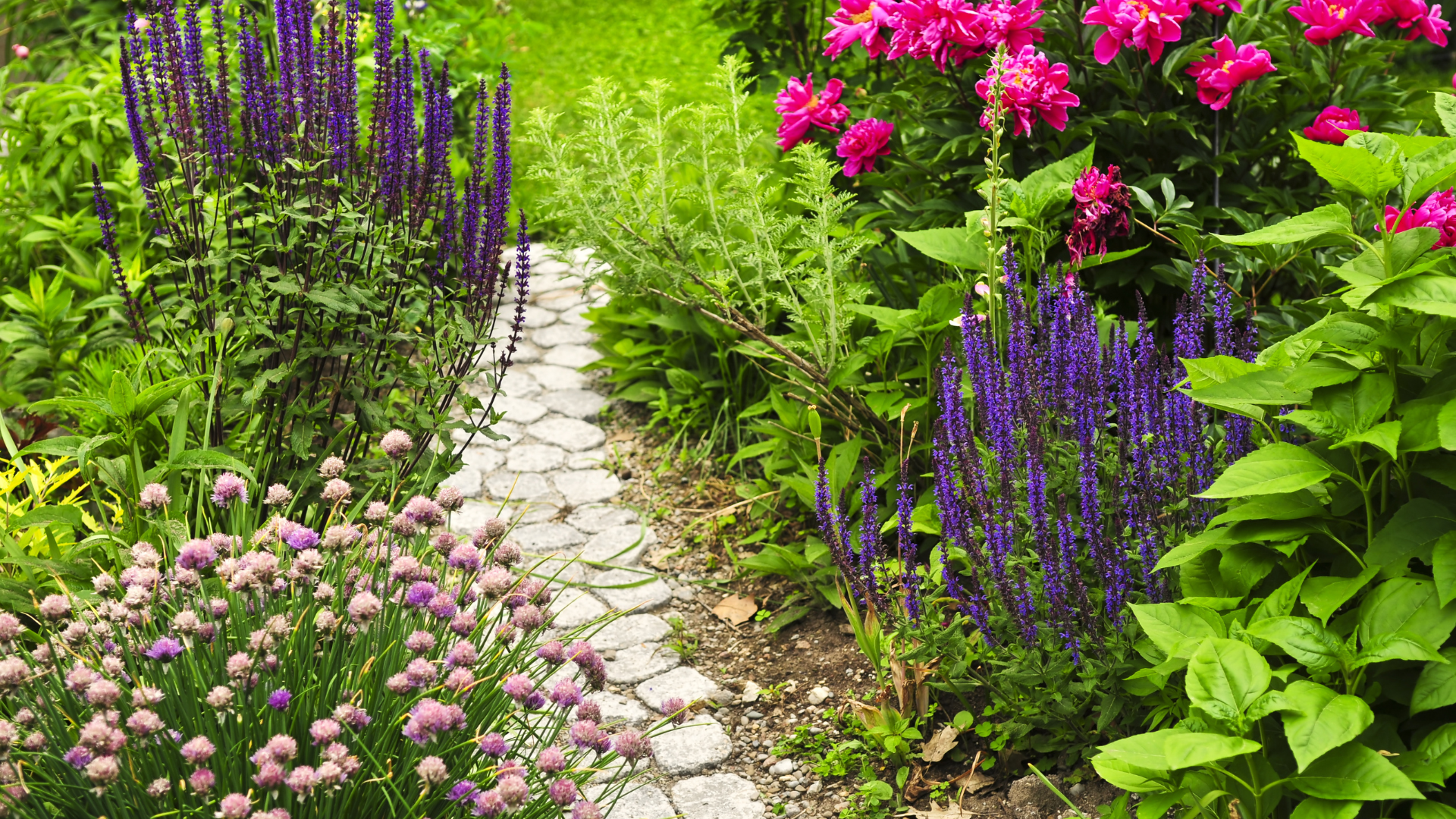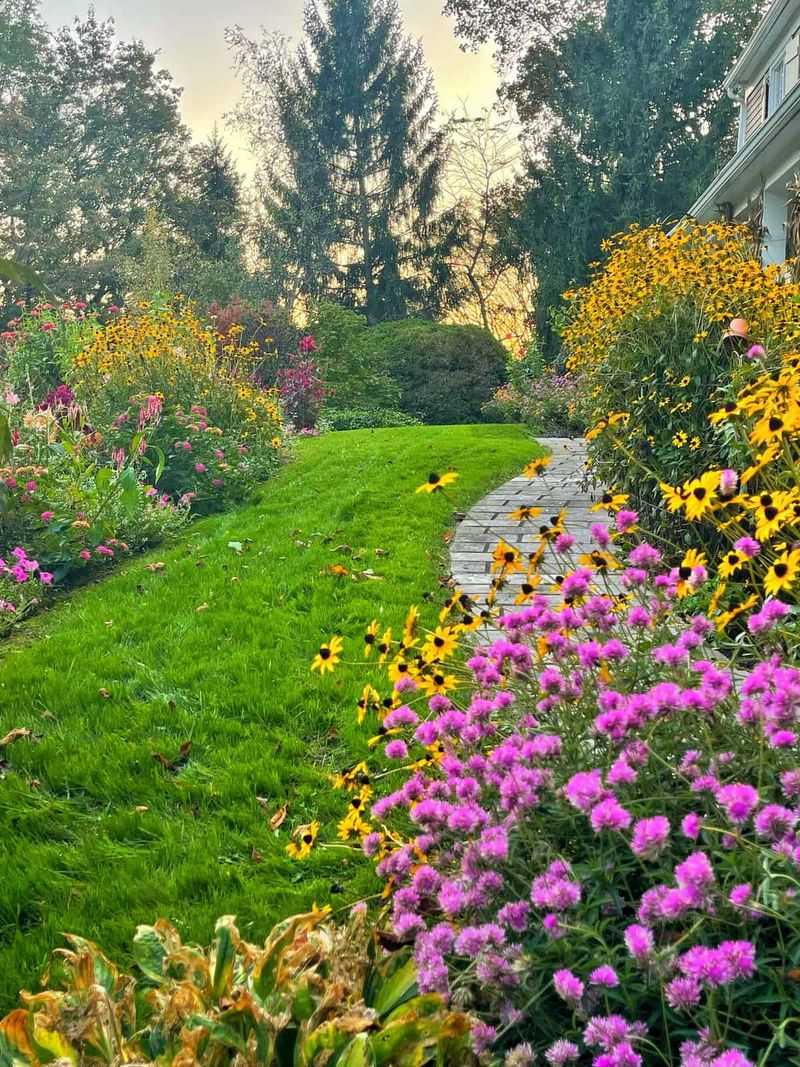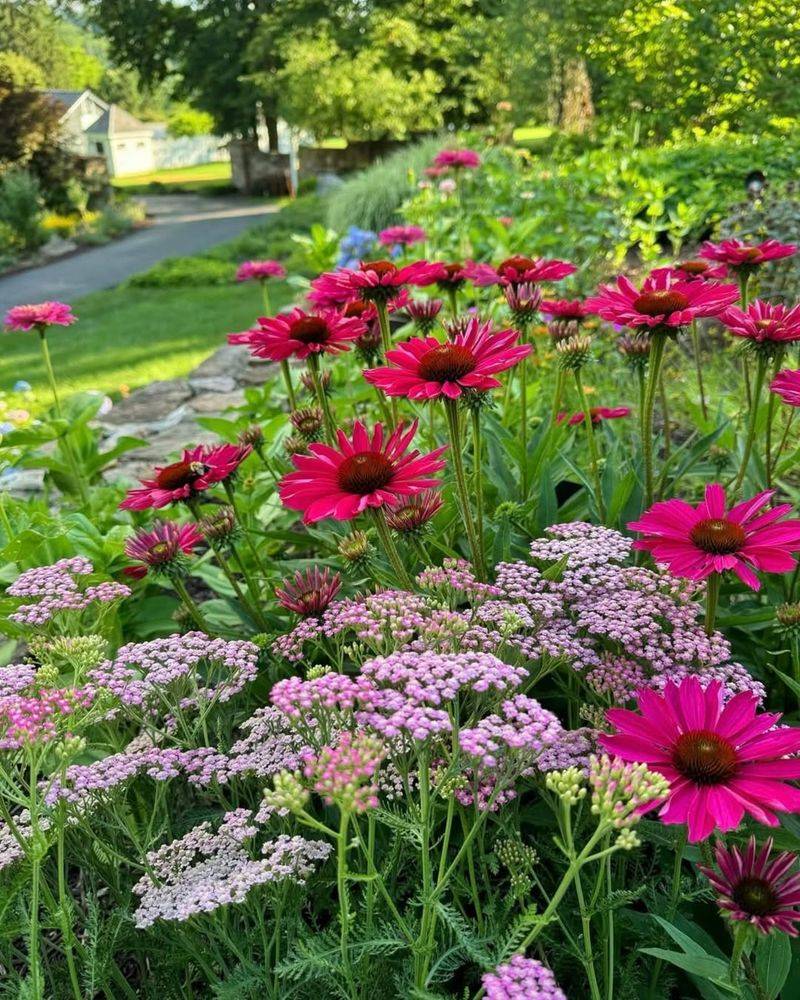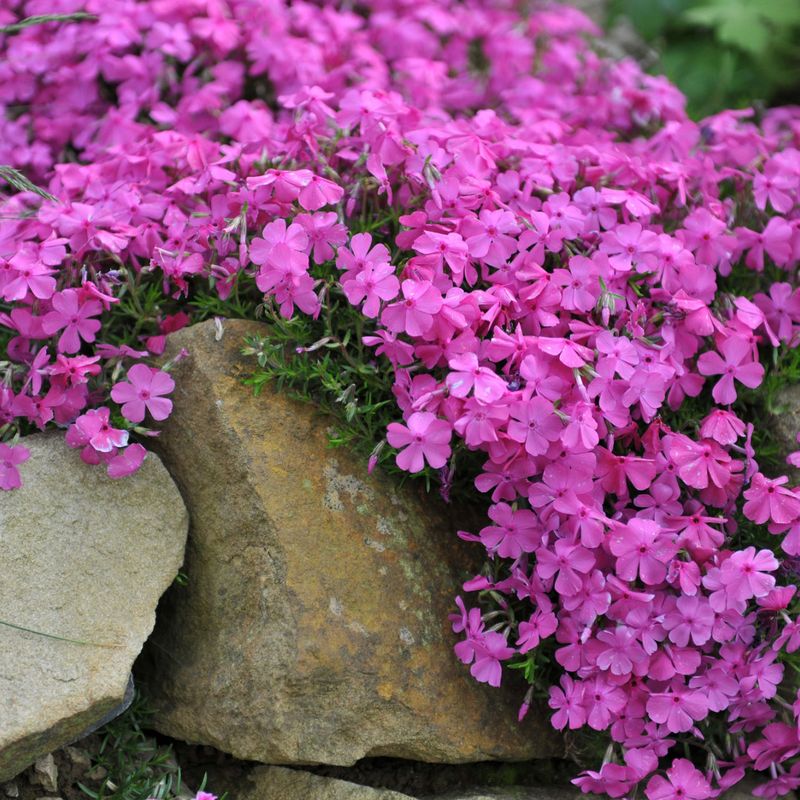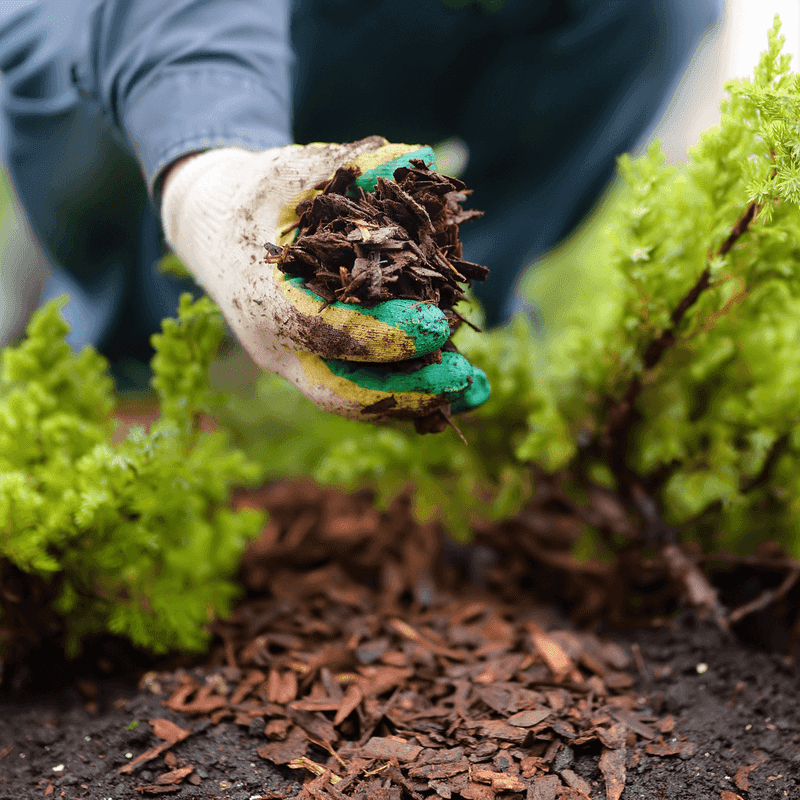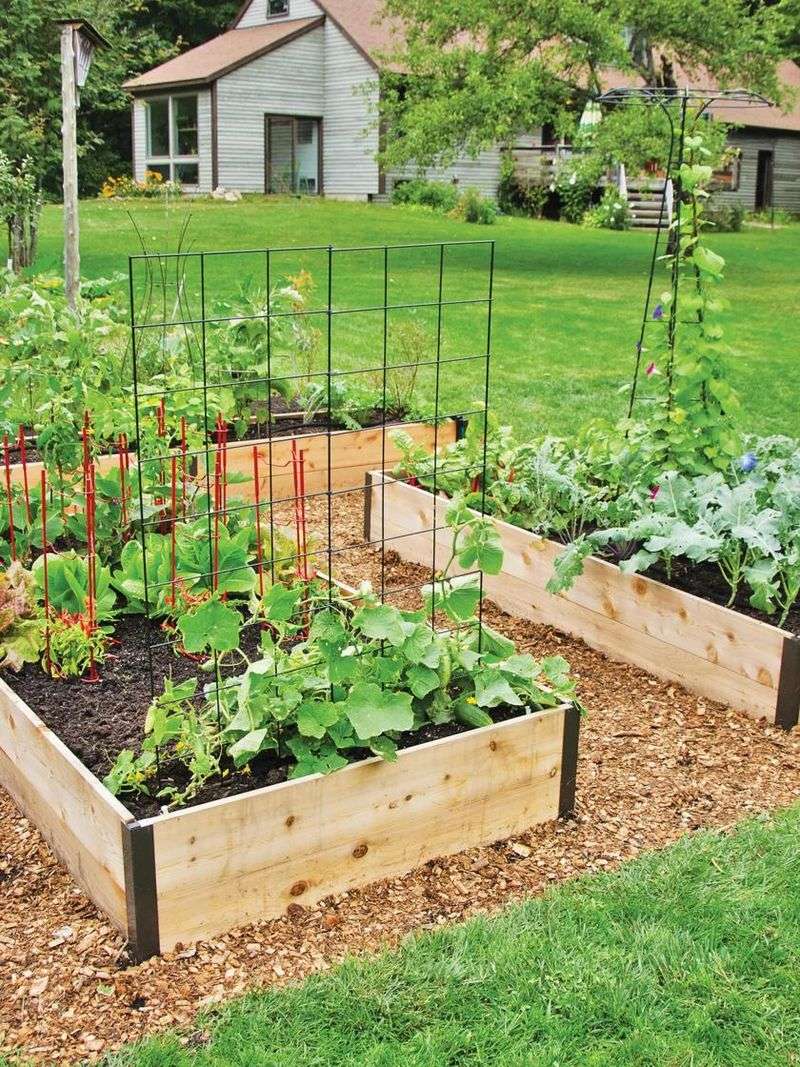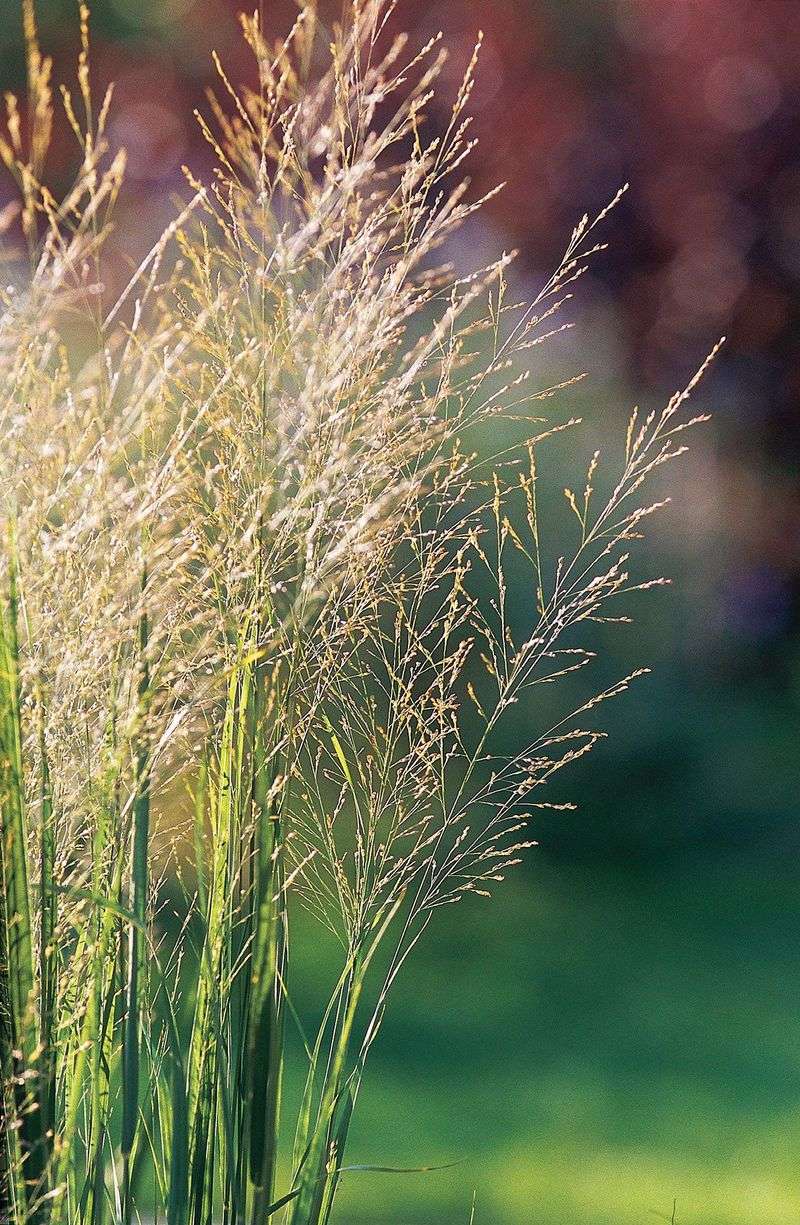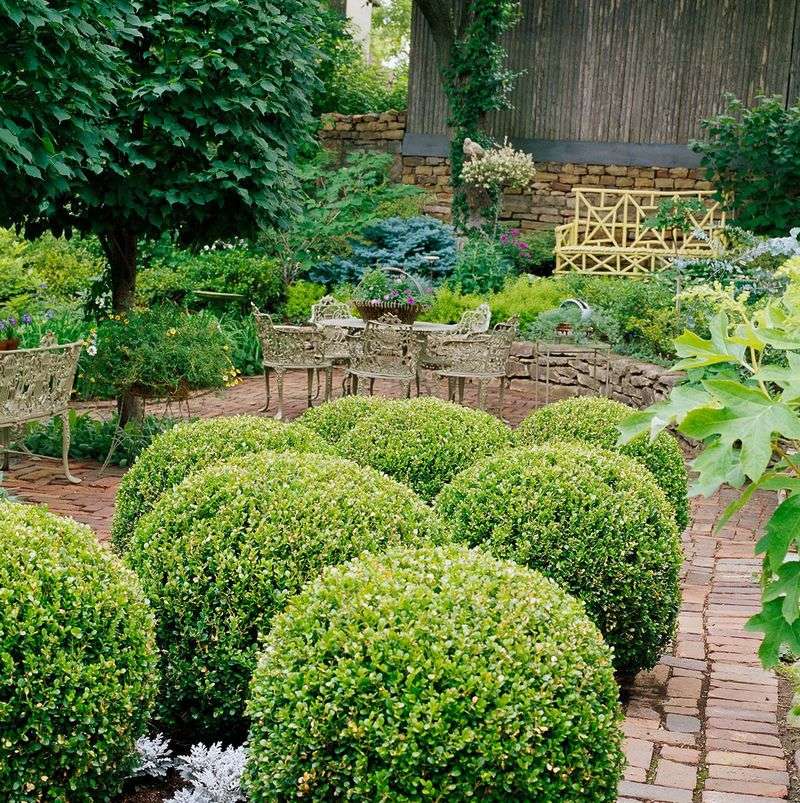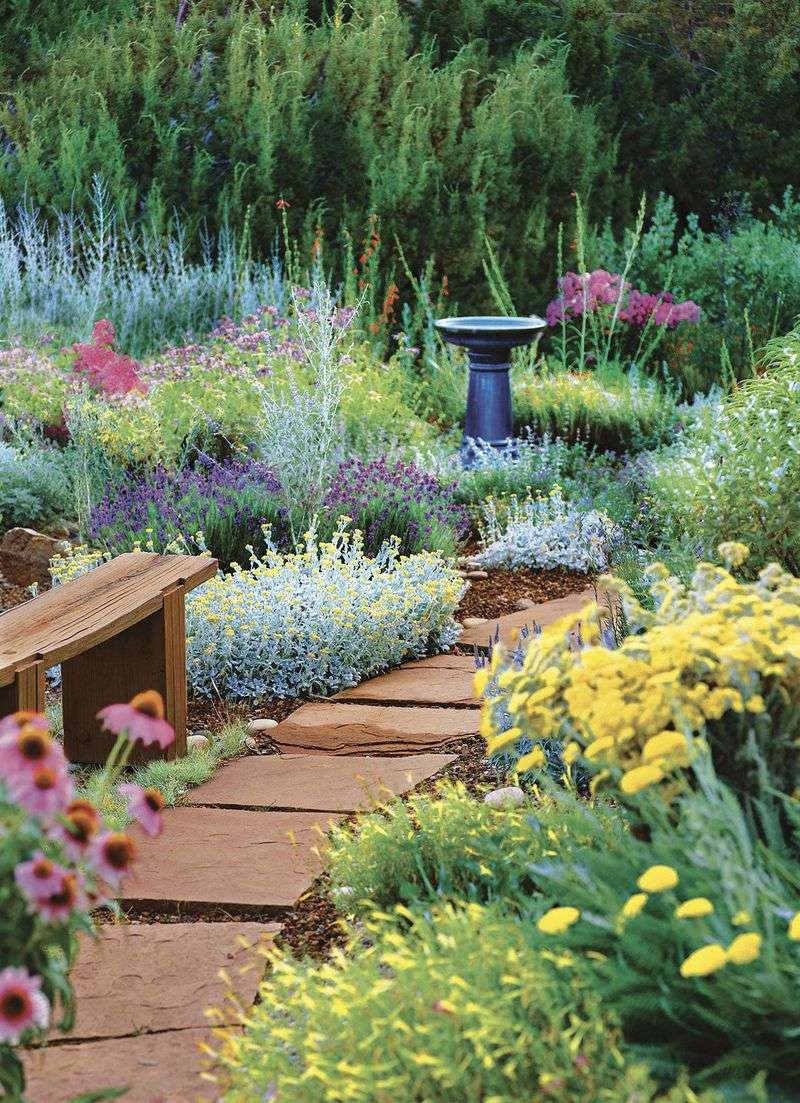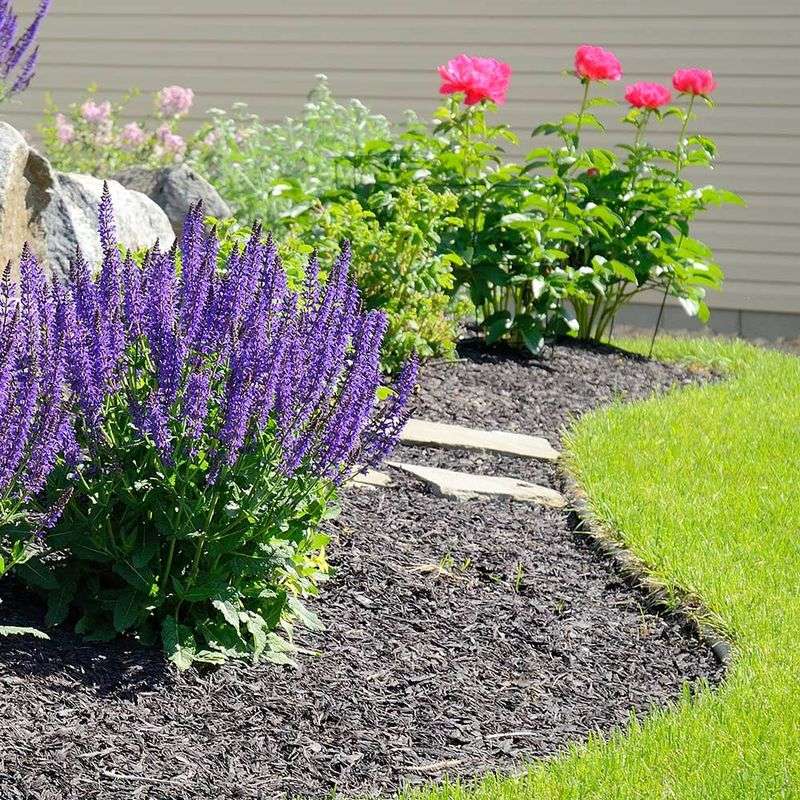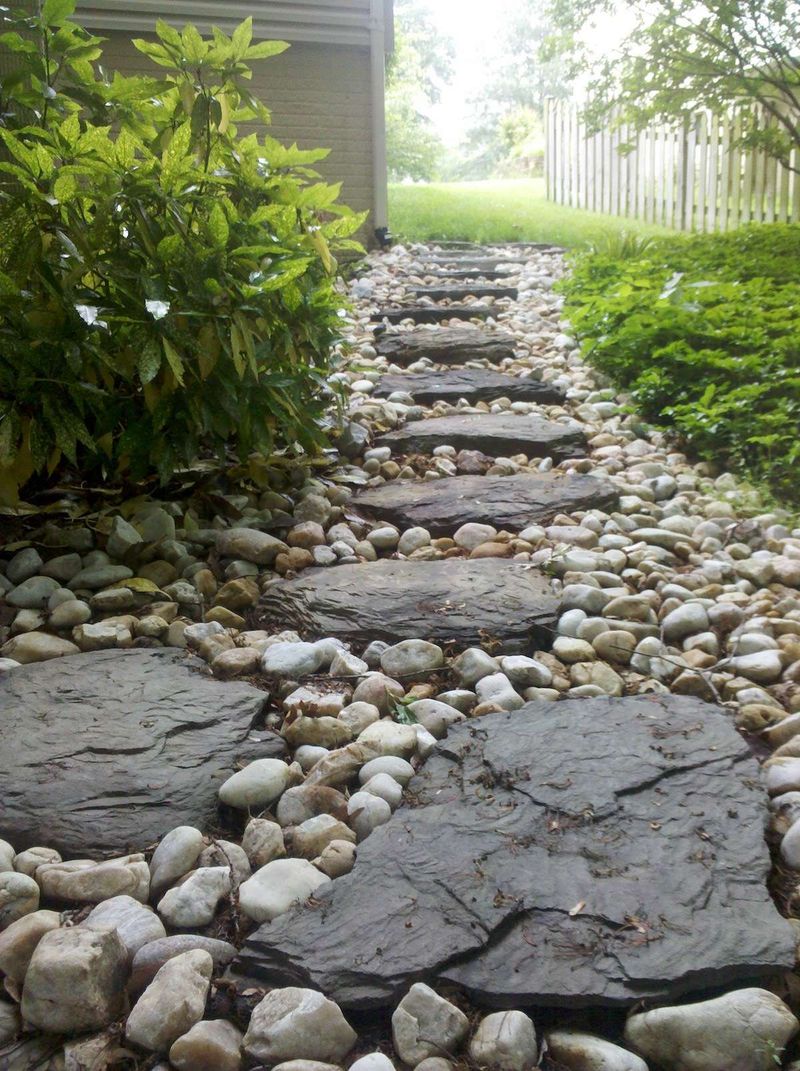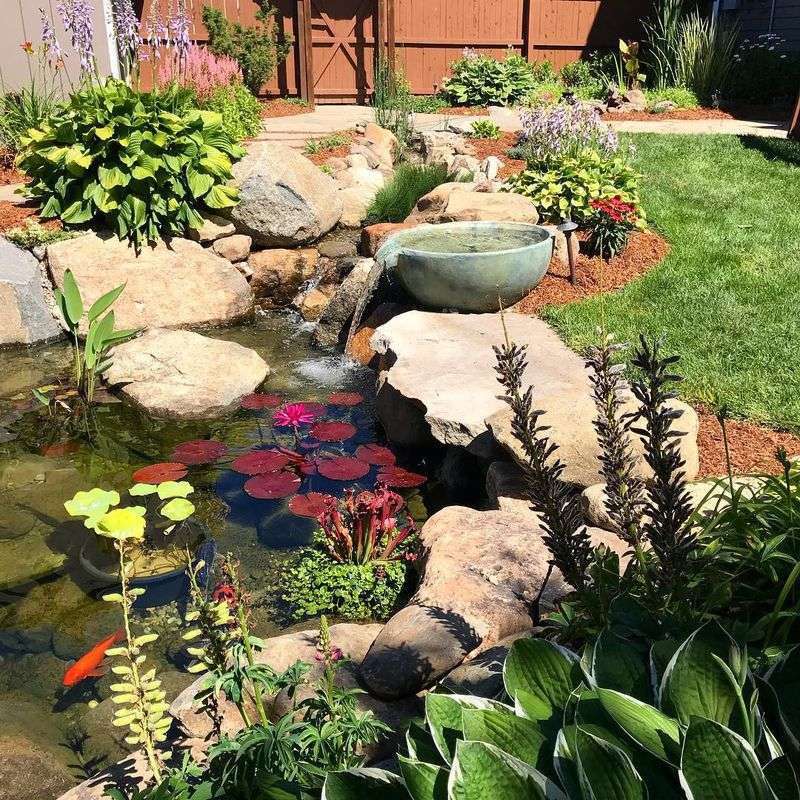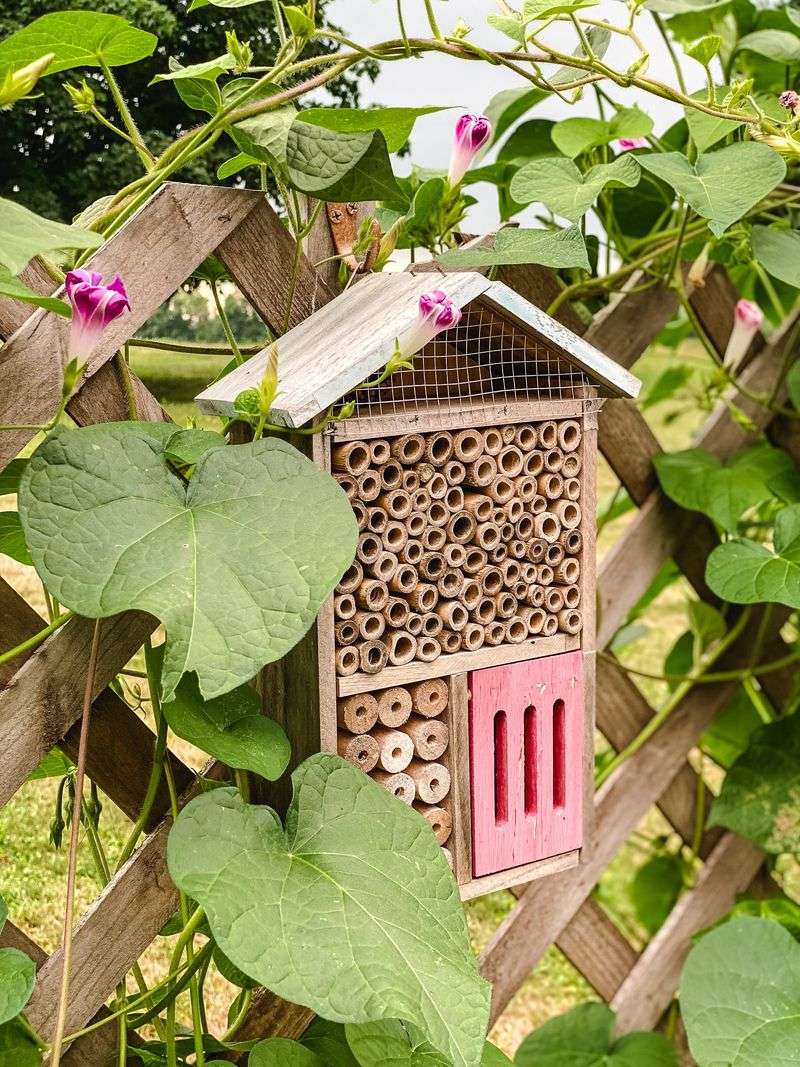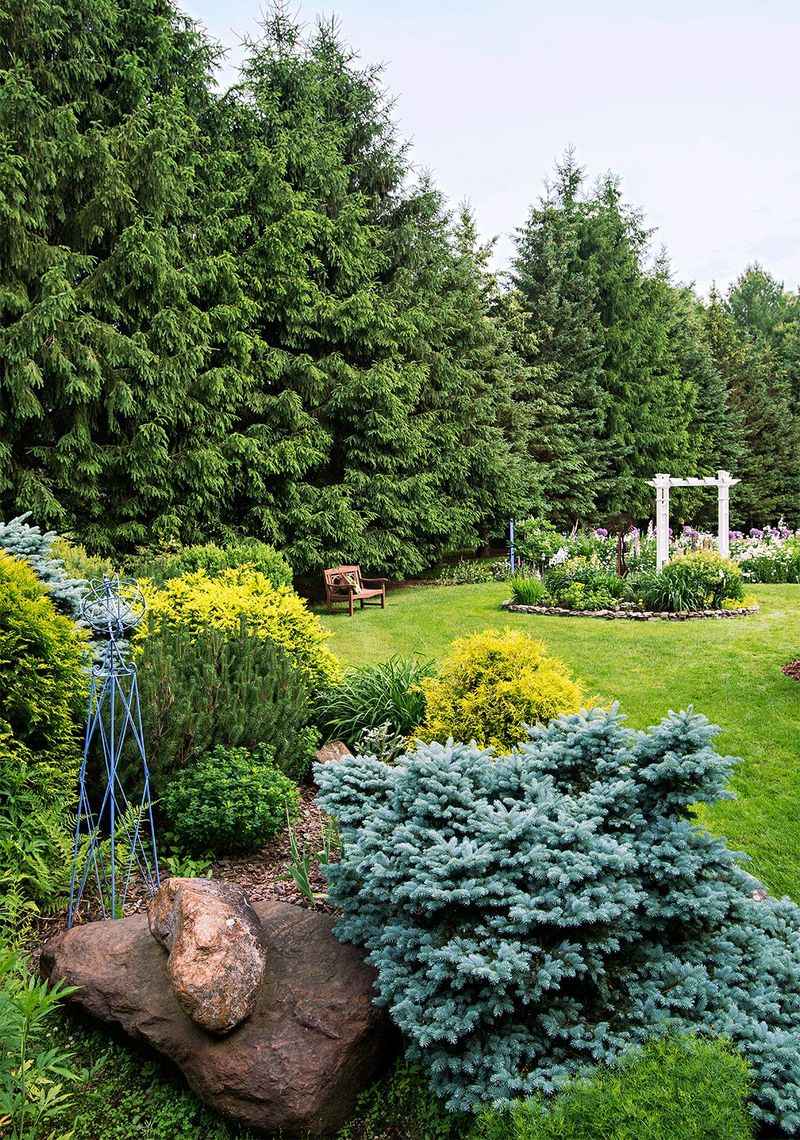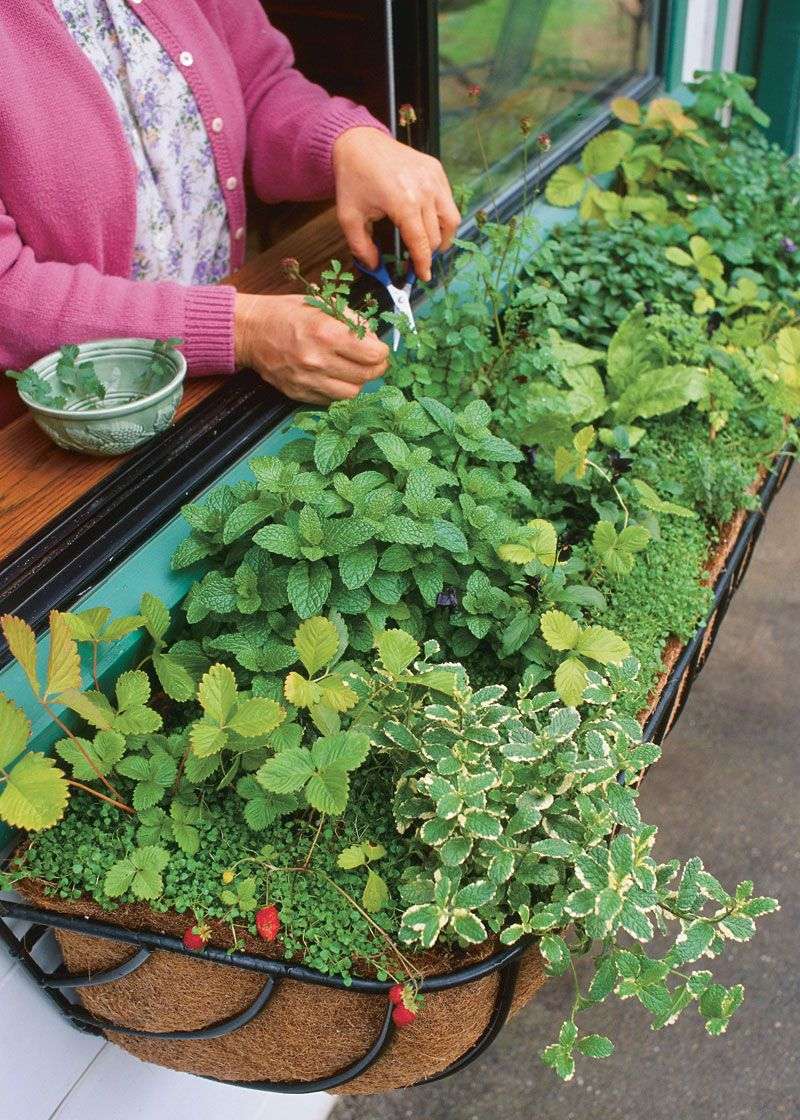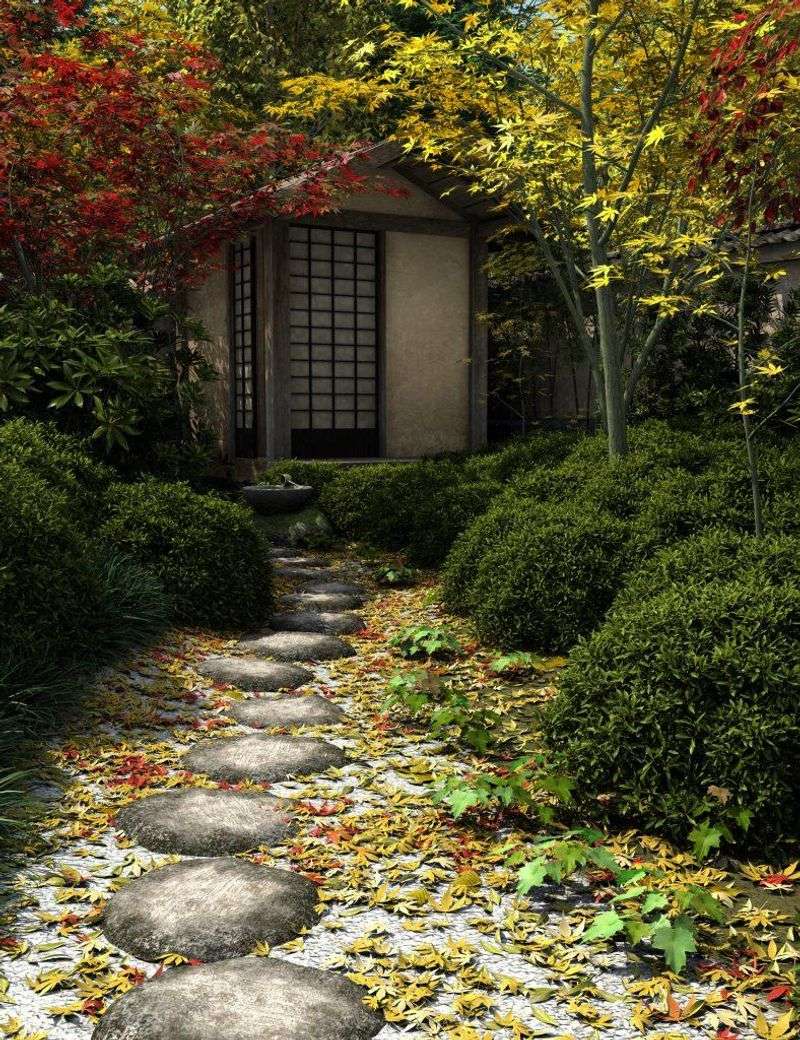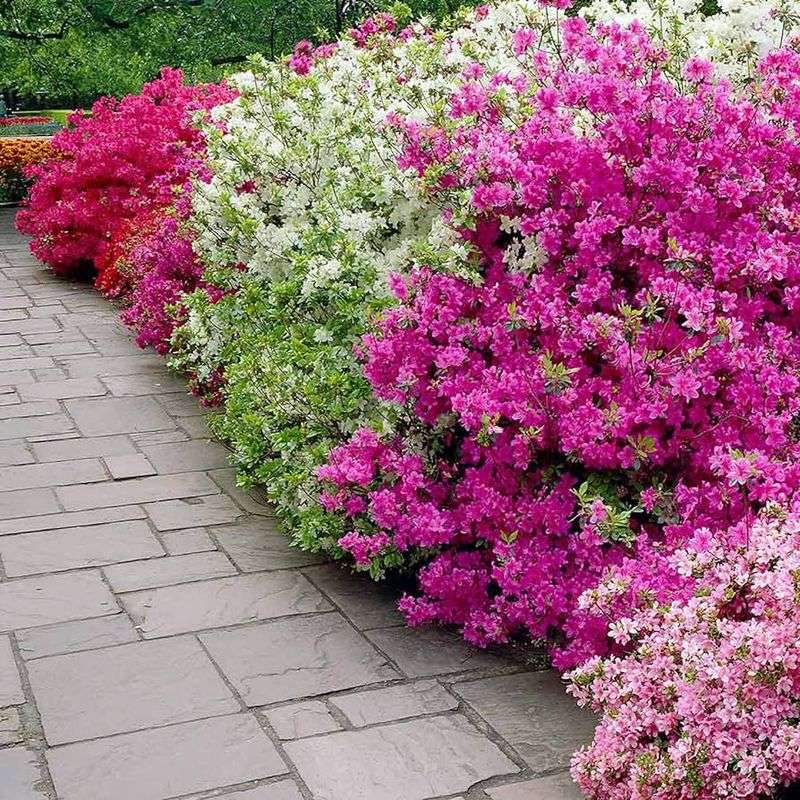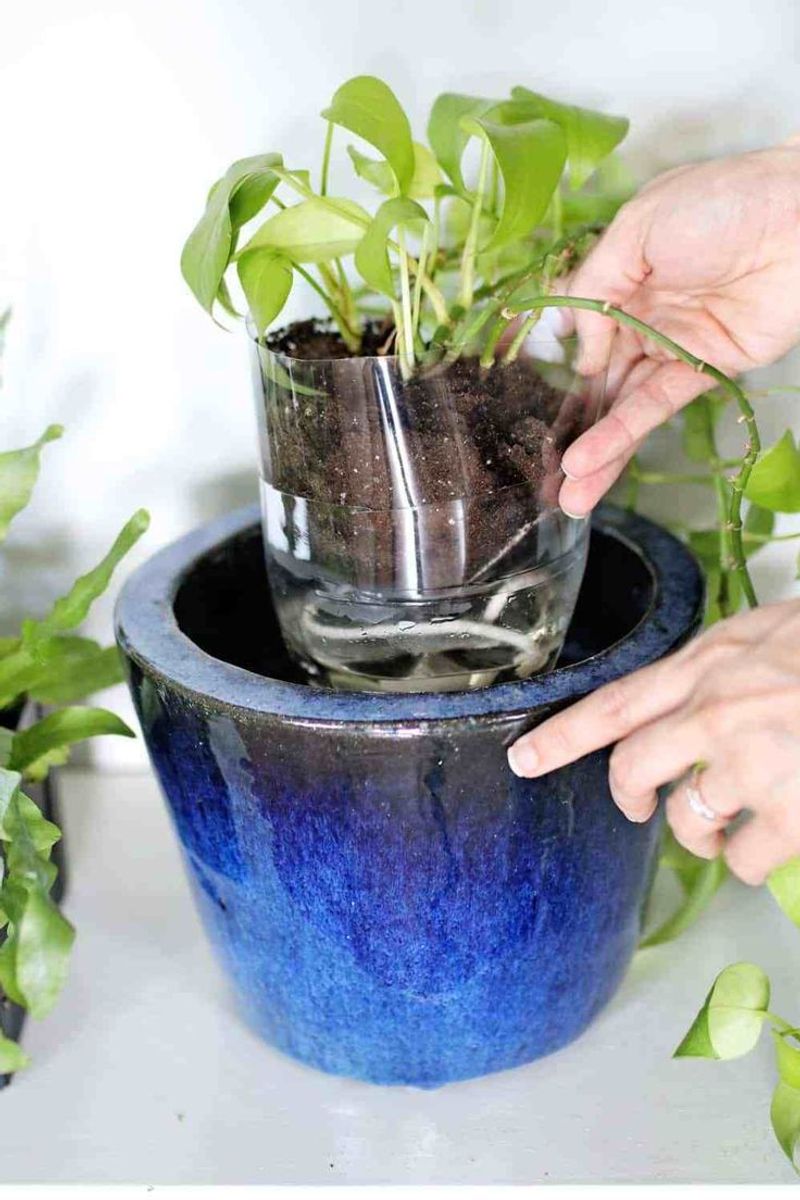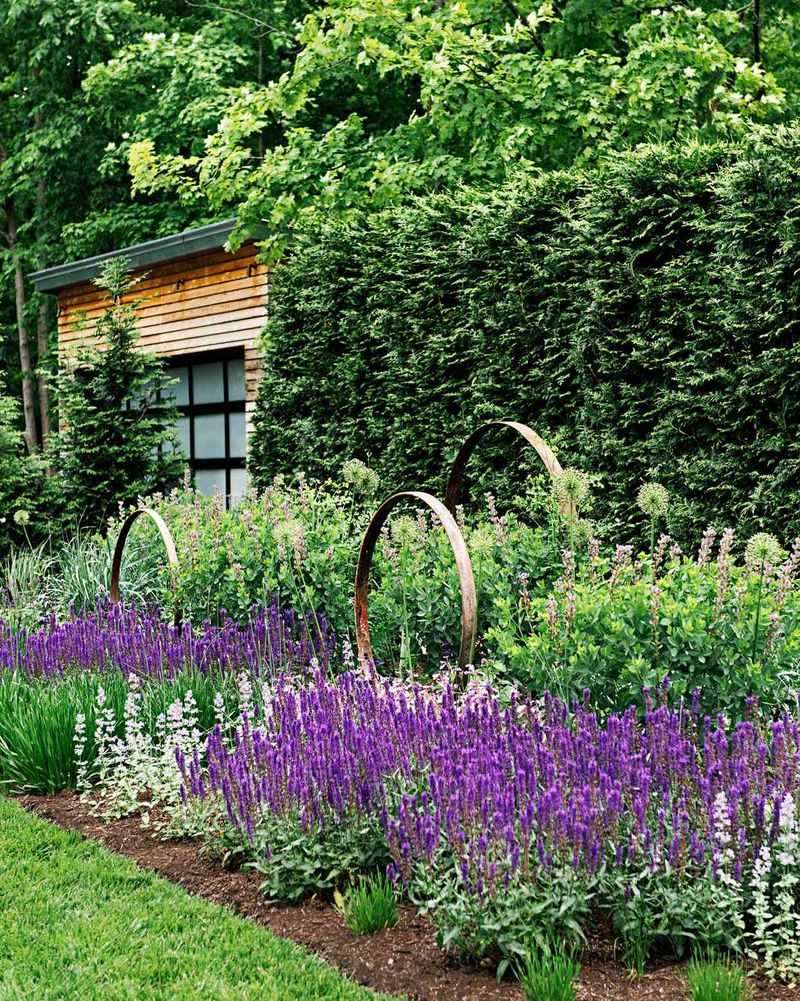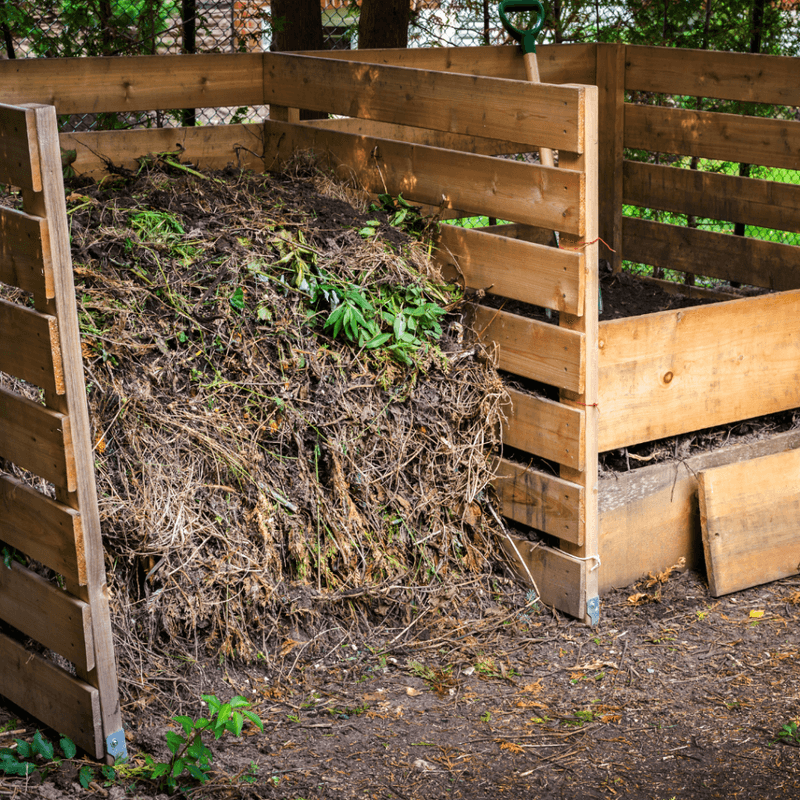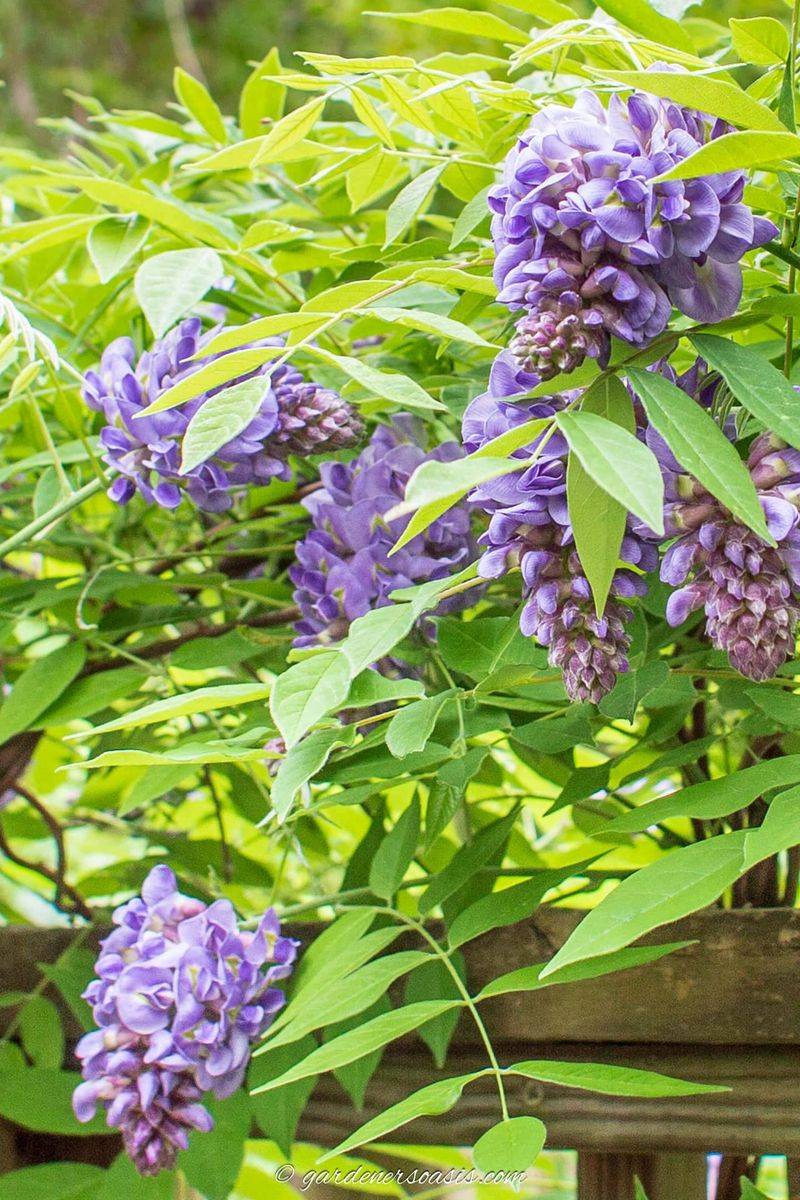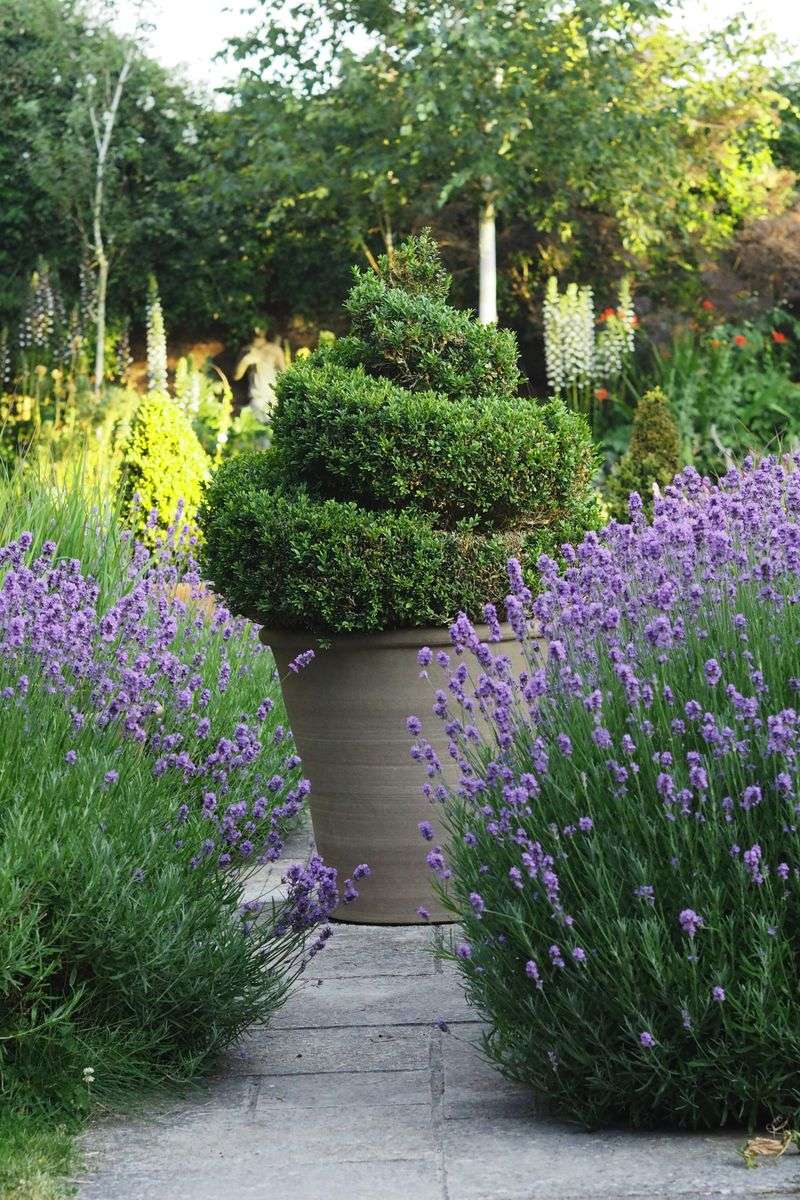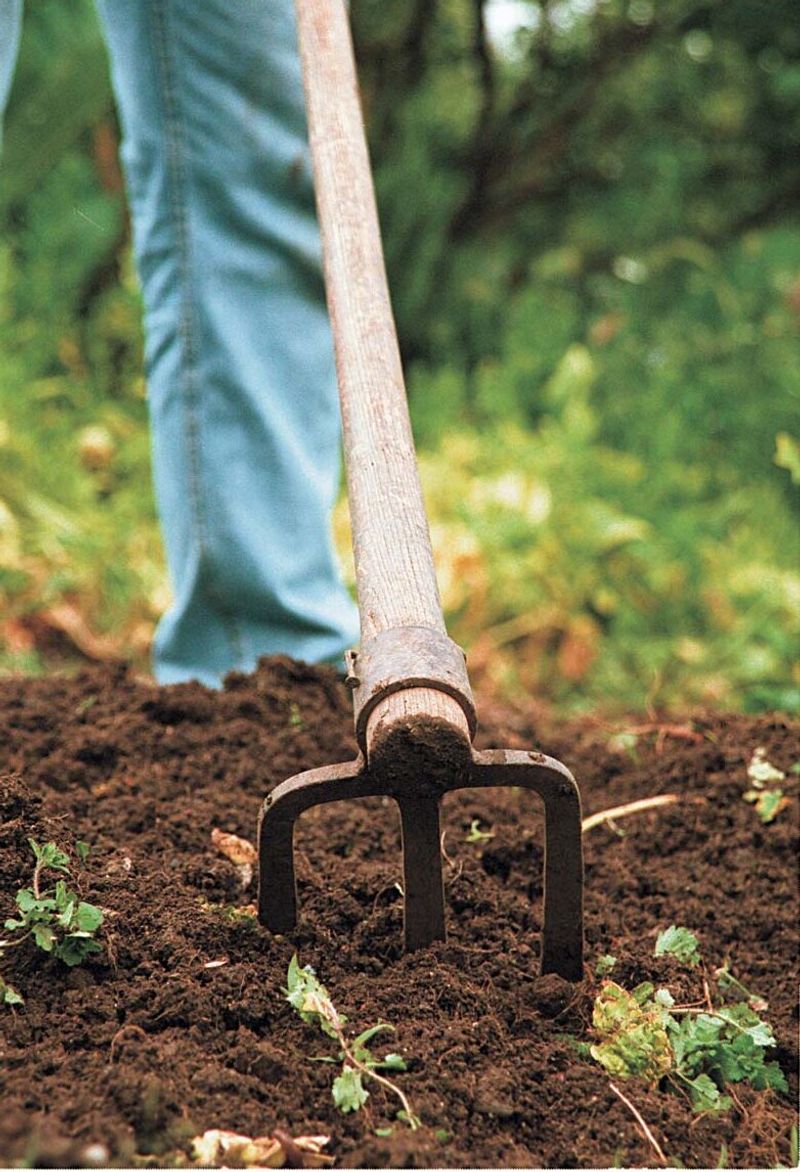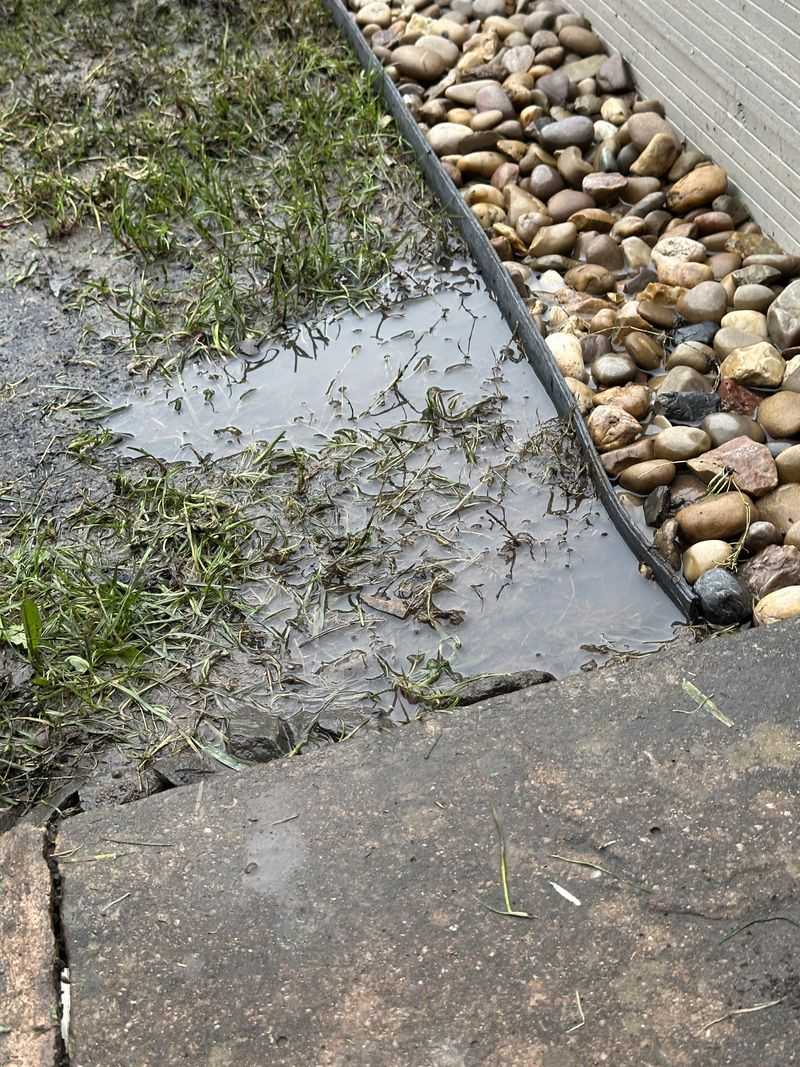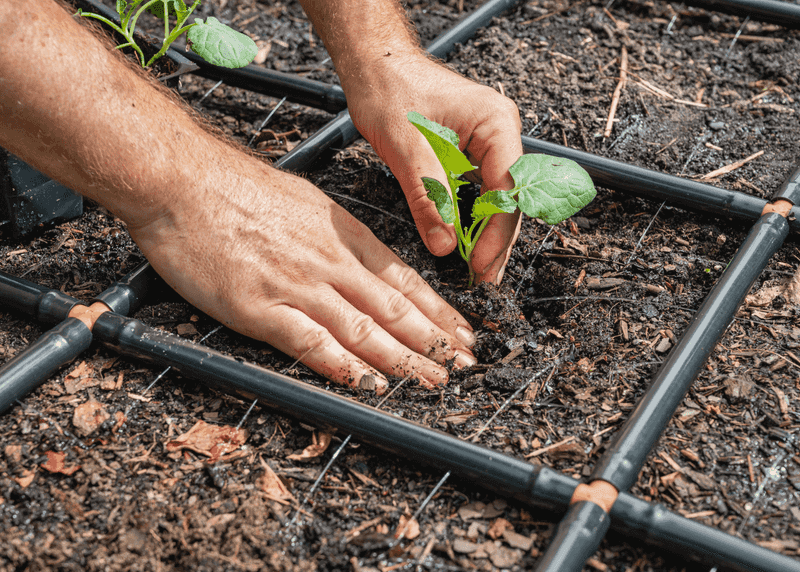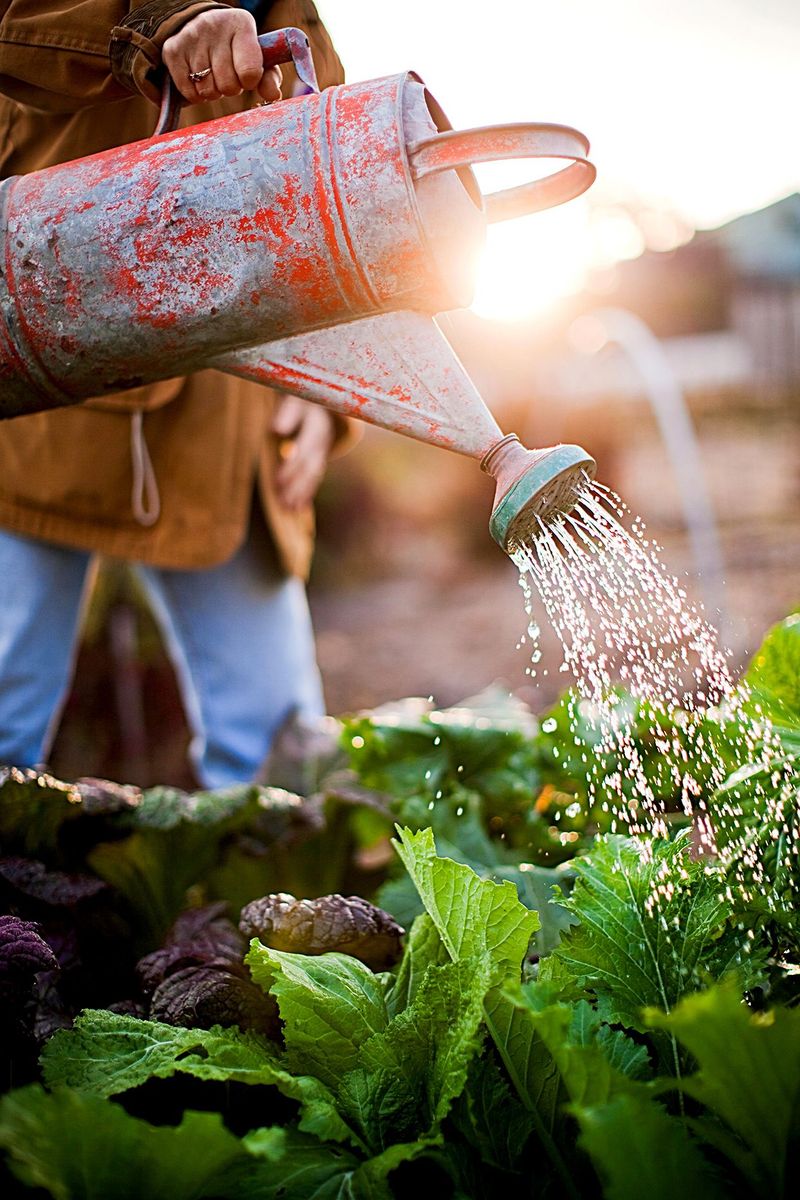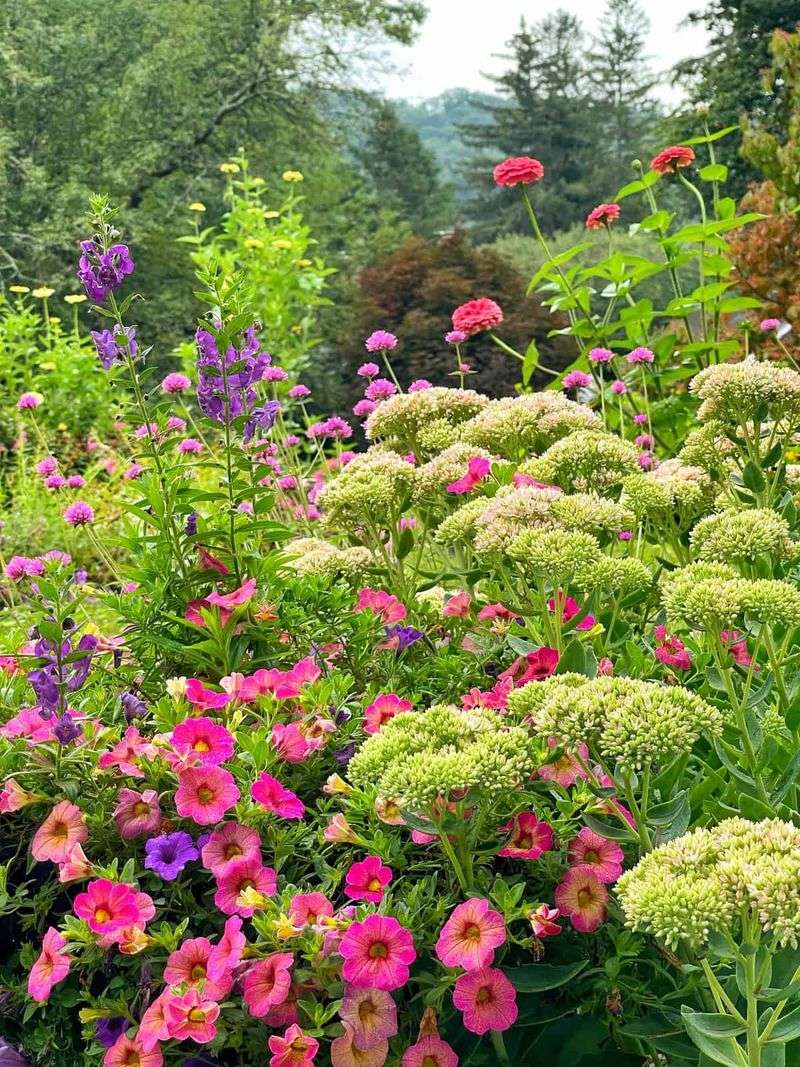Creating a garden in New England’s climate can feel like a challenge. Trust me, I’ve been there! Between unpredictable weather and tricky soil, it can seem overwhelming.
But don’t worry, I’ve gathered some awesome tips that’ll make gardening feel like a walk in the park (or, you know, a very fun gardening session).
Whether you’re a seasoned pro or just getting started, these tricks will help you create a garden that’s both beautiful and easy to maintain. Ready to get dirty—stress-free?
1. Choose native plants for easier care
Growing things that naturally belong in your garden’s region is like baking with the right ingredients. Native plants know the local climate’s quirks and blend right in without a fuss.
They don’t need constant attention and are less susceptible to pests. It’s like they’re on autopilot! Plus, these plants contribute to the local ecosystem, making it a win-win.
They’ll make your garden look great while saving you time and effort. You won’t have to baby them, just let them do their thing.
2. Plant drought-tolerant perennials
In the world of gardening, some plants guzzle water like it’s going out of style. Not drought-tolerant perennials! These sturdy characters can handle a dry spell without throwing a tantrum.
With water efficiency in their DNA, they make a perfect match for a low-maintenance garden. Imagine sipping lemonade on a hot day while your garden takes care of itself.
These plants not only save water but also give your space a classy look without the effort. It’s gardening made simple.
3. Incorporate ground covers to reduce weeding
Weeding is nobody’s idea of a good time, and ground covers are here to save the day. These plants spread out like a cozy blanket, keeping weeds at bay.
You’ll be amazed at how these heroes transform your garden into a neat and tidy space. Plus, they add an elegance without overdoing it.
Just plant them, and watch them weave their magic. You’ll have more time to enjoy your garden rather than fight with stubborn weeds. Relax and let them handle it.
4. Use mulch to retain moisture and suppress weeds
Mulch is like the unsung hero of gardening. It locks in moisture and tells weeds to get lost. With mulch, your plants stay hydrated, and you don’t have to water them constantly.
It’s like giving your plants a cozy blanket to snuggle in. Plus, it adds a refined look to your garden. Just spread it around, and enjoy the benefits without the effort.
Your garden will look polished and professional with less work. It’s a simple solution for a stress-free garden.
5. Opt for raised beds to reduce soil compaction
Raised beds are a bit of a gardening secret weapon. They keep your soil loose and airy, which plants absolutely love.
With raised beds, you avoid the dreaded soil compaction that can stifle plant growth. You’ll feel like a gardening whiz as your plants flourish without the struggle.
Plus, they make gardening easier on your back. It’s a win-win for you and your plants. Your garden will look organized and stylish while cutting down on maintenance. It’s gardening the smart way.
6. Include ornamental grasses for texture and movement
When a garden starts to look a bit too static, ornamental grasses can stir things up. They catch the breeze and bring a garden to life with their swaying motion.
These plants ask for little but give a lot. They add a contemporary flair without extra fuss. Just plant and let them dance!
Their intriguing textures and forms provide visual interest, turning your garden into a dynamic and cool space. Let the winds play, and watch your garden transform without constant care.
7. Select hardy shrubs and trees suited to the region
The backbone of any garden worth its salt is a selection of shrubs and trees that can stand the test of time. These hard-working plants provide structure and shade without a lot of pampering.
They’re like the reliable friends of a garden, always there to support and enhance. Choosing varieties suited to New England means less worrying and more enjoying.
They’ll make your garden look mature and well-thought-out with minimal effort. It’s like hitting the garden jackpot without the hard work.
8. Create garden zones with different plant needs
Zoning in gardening? Sounds fancy, but it’s just common sense. Different plants have different needs, so why not group them accordingly? This smart approach saves time and water.
It’s like organizing your kitchen; everything in its place. You can cater to each plant’s needs without running around like a headless chicken.
Garden zones streamline maintenance and keep your garden looking cohesive. This strategy turns a potential jungle into a harmonious space.
9. Add a rain garden to handle drainage issues
Rain gardens are the unsung heroes of eco-friendly landscapes. When water likes to cause chaos, a rain garden steps in to save the day.
They manage runoff and prevent soggy, swamp-like conditions. Planting one is a smart move; they look snazzy while keeping your garden healthy.
They blend into the landscape effortlessly, capturing rainwater and reducing erosion. With native plants, they require little maintenance.
10. Use natural stone or gravel for paths
Paths made of natural stone or gravel are like the red carpets of your garden. They guide visitors to explore without stepping on your precious plants.
These materials offer durability and low maintenance, making them a classic choice. Their texture blends seamlessly with the natural environment, adding elegance without shouting for attention.
You’ll appreciate how these paths create an inviting atmosphere, making your garden a place where people want to wander. All without constant upkeep.
11. Incorporate a small water feature for ambiance
The gentle sound of trickling water can turn your garden into a peaceful retreat. Water features, even small ones, bring a sense of calm and elegance.
They don’t demand much but offer a lot in return. Imagine sipping tea to the soothing sounds without needing a vacation. These features attract wildlife, adding life to your garden.
They enhance the atmosphere, making the place feel like a spa retreat. Enjoy the tranquility while your garden maintains its own charm. It’s a serene addition.
12. Use clumping bamboo as a low-maintenance hedge
Bamboo might sound exotic, but clumping varieties are well-behaved guests in your garden. They offer privacy and look classy without running rampant.
Unlike their rowdy cousins, clumping bamboo respects boundaries, making them a perfect fit for a tidy hedge. Their structure adds a modern vibe to any garden.
Providing a green backdrop, they make other plants pop while maintaining their subtle charm. With bamboo, you’ll have a garden that’s both functional and fabulous without the stress.
13. Create a bird and pollinator-friendly garden
Who wouldn’t love a garden buzzing with life? Birds and pollinators make your garden a lively space. Creating a haven for them is easier than you think.
With the right flowers and feeders, your garden becomes a hub of activity. These visitors help keep your garden healthy, doing all the hard work while you sit back.
You’ll enjoy their antics and charm as they flit about. A garden alive with creatures adds dimension and interest without complicating maintenance.
14. Mix in evergreen plants for year-round structure
Evergreen plants are the reliable old friends of your garden. They stick around when everything else seems to disappear. In winter, when things look a bit bleak, evergreens keep the party going.
They add structure and greenery all year, making your garden look good without the drama. They’re the calm in the storm, providing a backbone to the ever-changing landscape.
These plants don’t require much maintenance but give your garden a polished look. Enjoy a garden that never feels empty or neglected, whatever the season.
15. Plant a mix of herbs for easy culinary access
Having fresh herbs at your fingertips is like having a personal chef. Planting a mix is simple and rewarding. They’re low-maintenance and offer a fresh vibe to any meal.
Imagine cooking with herbs you’ve grown yourself, adding flavor without a trip to the store. They don’t require much pampering, and their fragrant leaves are a joy.
Your garden becomes a sensory delight, offering taste and aroma. Enjoy the convenience and satisfaction of a garden that gives back.
16. Consider a garden with a naturalistic, woodland feel
A garden that feels like a wooded glen can be both soothing and low-maintenance. It’s about embracing the local landscape, with native trees and understory plants.
This approach requires less fuss, as it mimics nature’s own design. Let the garden take on a casual elegance, where plants grow as they please.
This style invites exploration and relaxation, creating a garden that feels both welcoming and easygoing. Enjoy nature’s artistry without the constant upkeep.
17. Use low-maintenance flowering shrubs for color
Colorful flowers without the headache? Yes, please! Flowering shrubs offer blooms and are easier to care for than delicate perennials.
Their bursts of color turn your garden into a visual treat. These shrubs offer seasonal interest, creating a dynamic display throughout the year.
Their low-maintenance nature means you can enjoy the beauty without the backache. With flowering shrubs, your garden stays lively and colorful with minimal fuss.
18. Invest in self-watering containers for pots
Forget about daily watering chores. Self-watering containers are a gardener’s dream. They take the guesswork out of keeping plants hydrated.
With a built-in reservoir, your plants drink when they’re thirsty, not when you remember. This clever system ensures your plants stay healthy, even if you’re forgetful or busy.
These containers are perfect for patios and small spaces, providing growth with half the effort. Enjoy thriving plants without the worry of daily watering. It’s genius!
19. Design with plants that require minimal pruning
Pruning can feel like a never-ending task, but choosing plants that don’t need regular haircuts is a game-changer.
These plants grow to their full potential without constant trimming, saving you time and energy. Your garden stays neat and tidy without the work.
This approach means more time enjoying your garden rather than maintaining it. It’s perfect for those who want a beautiful space without the hassle of constant upkeep.
20. Include a composting area to reduce waste and feed plants
Turning waste into something useful is a gardener’s secret superpower. Composting not only reduces waste but also creates nutrient-rich soil for your plants.
It feels awesome to recycle kitchen scraps into plant food. Your plants will thank you with robust growth and health. Composting also cuts down on the need for chemical fertilizers, making it an eco-friendly choice.
Creating a composting area is simple and gives back in spades. You’ll enjoy the satisfaction of sustainable gardening while nourishing your garden naturally.
21. Don’t plant invasive species
Those rebellious plants that take over everything? Not in your garden! Invasive species can wreak havoc, overshadowing and outcompeting locals.
Choosing native or non-invasive options keeps your garden in harmony. By avoiding these garden bullies, you maintain control and reduce maintenance headaches.
Your garden remains a peaceful haven, allowing the chosen plants to shine. This thoughtful approach keeps your garden manageable and delightful year-round.
22. Avoid over-planting and overcrowding
Packing plants in like sardines might seem like a good idea, but it spells trouble. Crowded plants compete for resources, leading to stress and disease.
Giving each plant its space allows them to flourish without fighting for light and water. Your garden breathes easier, looks neat, and requires less attention.
This approach allows each plant to shine, creating a more balanced and visually appealing space. It’s gardening with common sense and style.
23. Don’t use too many high-maintenance plants
High-maintenance plants might look stunning, but they demand constant attention. Opting for plants that fend for themselves is a smart move.
These independent beauties make gardening enjoyable rather than a chore. Your garden becomes a relaxing space rather than a relentless task.
By minimizing high-maintenance plants, you create an oasis that’s both attractive and easy to care for. Enjoy the beauty without the burnout. It’s the perfect recipe for a laid-back garden.
24. Don’t neglect soil preparation and amendment
Skipping soil prep is like trying to bake without flour. Getting it right is essential for plant success. A well-prepared soil provides the foundation for healthy growth and robust plants.
Amending the soil with the right nutrients ensures plants get what they need to thrive. This step might require some elbow grease, but the payoff is immense.
You’ll see healthier plants and fewer problems down the road. It’s like setting the stage for a gardening success story.
25. Avoid planting in areas with poor drainage
Plants and soggy feet don’t mix well. Placing them in waterlogged areas leads to roots drowning and plants suffering.
It helps plants absorb what they need without the stress of too much water. This approach reduces disease and promotes health. You’ll watch your plants flourish instead of flounder.
Creating proper drainage is a smart move, leading to a happy garden. It’s gardening with a feeling of savvy.
26. Don’t over-fertilize or use chemical fertilizers
Less can be more when it comes to fertilizing. Overdoing it with chemicals doesn’t lead to better growth; it leads to problems.
Natural options provide balanced nutrition without the risks. This approach keeps your garden and the environment safe.
You’ll enjoy watching your plants thrive without the worry of harming them. By using organic fertilizers, you support a sustainable garden that’s rich in life. It’s a win for you and the Earth.
27. Don’t ignore proper spacing for plant growth
Giving plants room to grow is like giving kids space to play. Proper spacing is crucial for healthy development and reduces competition for resources.
Your plants will thank you with better growth and fewer issues. It’s a simple, no-fuss approach that leads to a fantastic garden.
Well-spaced plants create a sense of order and beauty, making your garden a joy to behold. This strategy keeps maintenance low while maximizing plant health.
28. Avoid constant watering; let plants dry out occasionally
Plants don’t want to be waterlogged any more than you want soggy socks. Allowing them to dry out occasionally is beneficial for their health.
It encourages root growth and reduces disease. Your plants will be tougher and more resilient. This approach reduces the need for constant attention, making your gardening routine more relaxed.
Enjoy a garden that’s healthy and thriving without being a slave to the watering can. Less stress, more growth.
29. Don’t forget about seasonal maintenance
Ignoring seasonal maintenance is like skipping your car’s oil change. Each season brings its own needs, and preparing your garden accordingly ensures its health.
This practice reduces surprise problems and keeps your garden looking its best. Seasonal tasks might seem like a chore, but they pay off in the long run.
You’ll enjoy a garden that adapts beautifully to changing conditions. Embrace the ebb and flow of nature, and your garden will reward you with less hassle and more beauty.
30. Don’t plant too many annuals that require replanting each year
Annuals bring a splash of color but require a yearly redo. Keeping them in check prevents a cycle of constant replanting.
A balanced mix of perennials and a few annuals provides beauty without the grueling work. Your garden retains interest without the annual overhaul.
Enjoy the pops of color annuals provide, but don’t let them take over. This method keeps gardening manageable and your garden always a sight to behold.

